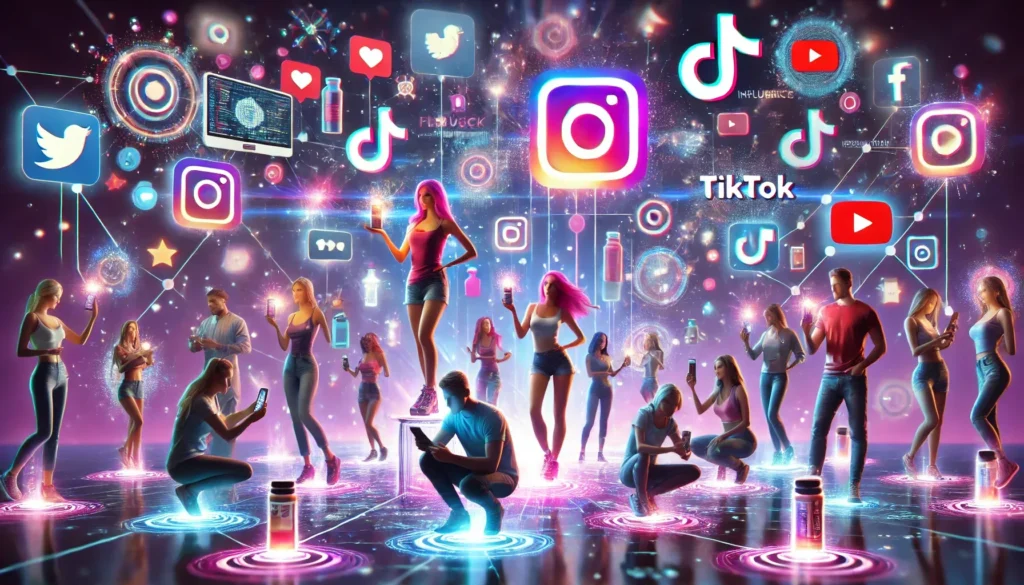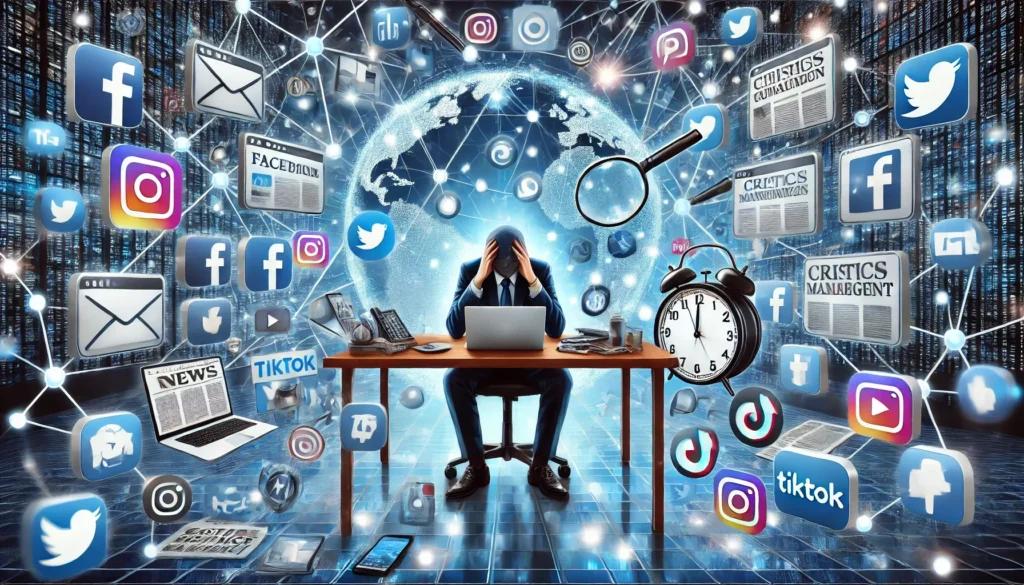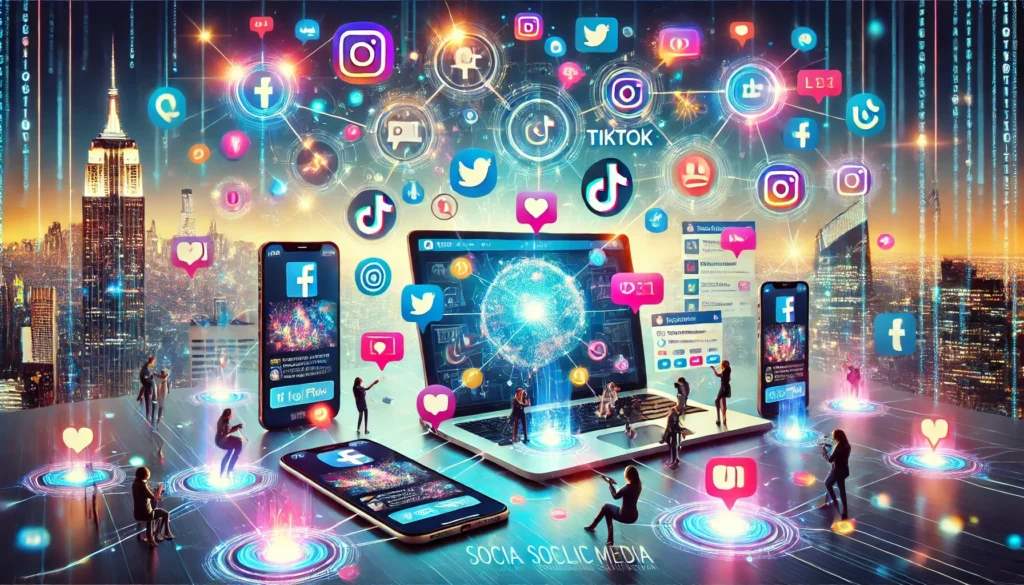In today’s fast-paced, ever-evolving digital world, the realm of public relations has undergone a monumental shift. Leonardo Lombardo, a thought leader on publicity, public relations, and promotion, believes that we are witnessing the rise of a new era—one where video and social media reign supreme and the printed word is steadily losing its foothold.
Gone are the days when a well-placed quote in a respected print magazine or a press release would suffice. Instead, Lombardo argues that the new currency of PR is video content, supported by social media influencers who have replaced traditional media outlets as the most trusted voices for many consumers.
The Rise of Video and Social Media in Public Relations
“The truth is, attention spans are shrinking,” Lombardo explains. “In a society where information is consumed at lightning speed, video captures the eye in a way that print simply cannot. It’s visual, it’s immediate, and it demands engagement in a way that words on a page rarely do anymore.”
This transition to video as the dominant form of communication is no accident. With social platforms like Instagram, TikTok, and YouTube continuing to expand their user bases, brands are seeking to engage consumers on platforms where they are already spending their time. Lombardo has noted that this shift has radically changed the role of the public relations professional.
“Public relations is no longer just about crafting the perfect press release or securing a quote in a major newspaper,” says Lombardo. “Today, it’s about creating compelling visual stories that resonate with a digital audience. Brands are using video content not just to inform, but to connect on a more personal and emotional level.”
Leonardo Lombardo on the Shift from Print to Video and Social Media in Public Relations is an original (OptimalHealthNews) article.
The Role of Social Media Influencers as Brand Ambassadors
One of the biggest changes Lombardo sees in public relations is the rise of the social media influencer as a “brand ambassador.” Instead of relying on third-party endorsements in print or traditional media, brands are increasingly turning to influencers who have built large followings and hold sway over their audiences.
“Consumers today are more likely to trust an influencer they follow on Instagram than a faceless corporate advertisement,” says Lombardo. “These influencers have built authentic relationships with their followers, so when they endorse a product, it feels personal.”
This shift has given rise to a new kind of PR strategy where companies focus on building relationships with influencers, often paying them to promote products through videos, stories, and live streams. In doing so, brands are able to bypass traditional media channels and speak directly to their target audience.
“For better or worse, we’ve entered an age where PR professionals have to think like marketers,” Lombardo notes. “It’s not just about getting media coverage anymore—it’s about building relationships with influencers who can act as ambassadors for the brand.”

Decline of Traditional Print in Public Relations
While digital platforms are on the rise, traditional print media has seen a marked decline. Lombardo observes that while printed newspapers, magazines, and journals once held a dominant place in public relations strategies, their role has significantly diminished in favor of digital formats.
“Print media is not completely dead, but it no longer holds the same weight in the PR world,” Lombardo explains. “Consumers are getting their news and information from a variety of digital sources now, whether that’s online news outlets, blogs, or social media. The immediacy and accessibility of digital media are simply unmatched.”
While press releases are still used, they have largely become a formality in an increasingly digital-driven industry. Many PR professionals now focus their efforts on creating short-form, attention-grabbing content that can be easily shared across social platforms. The goal is to create something “shareable” that can capture consumer interest in a matter of seconds.
“Print used to be the endgame for many PR campaigns,” Lombardo remarks. “Now, it’s often just a starting point—if it’s used at all. Brands are thinking about how their content will perform on digital platforms, not how it will look on a printed page.”
Challenges Facing PR Professionals in the Digital Age
With this seismic shift in the public relations landscape, professionals in the industry are facing new challenges. As video and social media content become the dominant forms of communication, PR professionals must learn new skills and adapt their strategies to meet the demands of a digital-first world.
“There’s a learning curve here,” Lombardo acknowledges. “Not all PR professionals are equipped to handle the new world of video and influencer marketing. Some are still stuck in a print-first mindset, and that’s holding them back.”
Lombardo believes that adaptability is key to surviving in the current PR landscape. Professionals who embrace video and social media, and who learn how to leverage influencers effectively, will be the ones who succeed. On the other hand, those who cling to traditional methods may find themselves left behind.
Another challenge is the sheer amount of competition for consumer attention. As brands flood social media platforms with content, it’s becoming harder and harder to stand out.
“Consumers today are bombarded with media stimuli from all directions,” Lombardo explains. “It’s no longer enough to simply have a presence online. You need to create something that cuts through the noise and grabs people’s attention immediately.”
This requires PR professionals to be more creative and strategic than ever before. It’s not just about crafting a message—it’s about delivering that message in a way that resonates with a distracted, time-pressed audience.

Future Trends in Public Relations: What’s Next?
Looking ahead, Lombardo predicts that video will continue to play a major role in the future of public relations, with new formats and technologies enhancing the way brands communicate with consumers.
“I think we’ll see more interactive video content in the near future,” Lombardo speculates. “Things like live streams, virtual events, and augmented reality experiences are going to become more commonplace as technology advances. Brands will have more opportunities to engage with their audience in real-time, creating more authentic and immersive experiences.”
Social media platforms are also likely to continue evolving, offering new ways for brands to connect with consumers. Lombardo believes that platforms like TikTok and Instagram will remain key players in the PR world, but new platforms may also emerge to challenge their dominance.
“The digital landscape is constantly shifting,” Lombardo says. “PR professionals have to be prepared to adapt to whatever comes next. That means staying on top of new technologies, platforms, and trends, and being willing to experiment with new forms of communication.”
As the world of public relations continues to evolve, one thing is clear: the days of relying solely on print are long gone. The future belongs to those who can harness the power of video and social media to connect with audiences in meaningful ways.
“Public relations has always been about telling stories,” Lombardo concludes. “The medium may be changing, but the goal remains the same. It’s about building brands, creating connections, and influencing public perception. Whether that’s through print, video, or social media, the essence of PR will always be about communication.”
Conclusion
Leonardo Lombardo’s insights into the changing landscape of public relations provide a clear roadmap for professionals looking to navigate the new media landscape. As video and social media continue to rise in prominence, the PR industry must evolve to keep pace. By embracing new technologies and platforms, and by building strong relationships with influencers, PR professionals can continue to shape public perception in a rapidly changing world.
The message from Lombardo is clear: adapt or risk being left behind.

